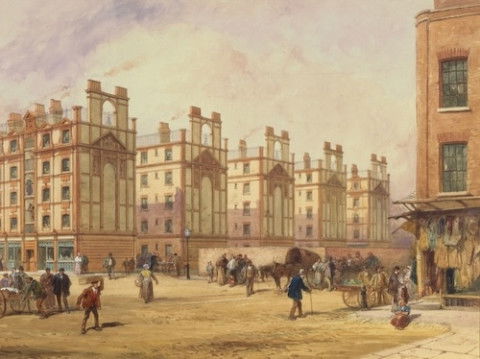
www.dailysignal.com
‘Got to End’: Ron Johnson Says Senate Leadership Needs Dramatic Change in ‘The Signal Sitdown’ Premiere
For the premiere of The Daily Signal’s new show, “The Signal Sitdown,” I sat down with Sen. Ron Johnson, R-Wis., to discuss the state of the Nov. 5 presidential election, the race to replace Senate Majority Leader Mitch McConnell, R-Ky., and new revelations about both assassination attempts on former President Donald Trump.
Following reports that elements of the Republican Party secretly hope that Trump loses to Vice President Kamala Harris on Election Day, I asked Johnson why that is apparently the case.
“There are probably people who would voice that prior to Donald Trump being our nominee,” Johnson replied.
“But I think once he’s our nominee,” Johnson added, “I don’t know anybody who doesn’t want him to win, regardless of their views. I mean, we want to be able to save this country.”
Since national Democrat leaders substituted Harris for President Joe Biden atop the ticket, polls show the presidential race has tightened. Johnson said he believes the corporate media is to blame.
“In a sane world with an unbiased media, this election wouldn’t even be close, but we have an insane world with a highly biased media,” Johnson told me. “It’s not a level playing field, it’s not a fair fight. Not even close.”
The Nov. 5 election won’t be the end of crucial Senate-linked elections this fall. Shortly afterward, the Senate Republican Conference will choose a new slate of leaders—most importantly, a successor for McConnell at the top of what is expected to be the GOP’s new Senate majority.
Johnson said he hopes this change in leadership can transform how the Senate operates.
“Under Leader McConnell, his style of leadership is: We need operational security, so I can’t tell anybody what I’m going to do. And so he just springs his decision on us, last minute, and then expects people to line up behind it,” Johnson said.
“We’ve gone from $8 trillion up to $35 trillion in debt under his leadership,” Johnson said. “He’s been the one person in every negotiation for every deal—debt ceiling, every budget, every appropriation package.”
“That’s got to end,” the Wisconsin Republican said.
As for the next GOP leader of the Senate, Johnson suggested he likes Sen. Rick Scott, R-Fla., for the job.
“It’s so important to get a really good majority leader if we have the majority,” Johnson told me. “Somebody who has private sector experience, somebody who’s led large organizations, understands how a functioning organization works [and] how to get the most of the people that are within your organization.”
With Johnson’s own seat not up for grabs in 2024, the Wisconsin senator has focused on getting to the bottom of the two assassination attempts on Trump.
Johnson has been intimately involved in a Senate panel’s investigation, which recently released preliminary findings. Nevertheless, Johnson told me, “things have been withheld” from Senate investigators, including autopsy results for the 20-year-old shooter in Butler, Pennsylvania.
“We haven’t seen the autopsy. We just issued a subpoena, apparently, to get the autopsy,” Johnson said. “The House got it. They can’t share it, for whatever reason. We don’t see a toxicology report. The FBI goes, ‘Oh, well, it’s standard procedure. We release the body once we’re done with it.’ Well, we weren’t done with it.”
“This isn’t a standard situation,” the Wisconsin Republican added. “This is an assassination attempt [on] a former president and a [current] presidential candidate. You got to make sure the public has confidence in your autopsy report and your toxicology report.”
“You need experts looking at these things so we don’t have lingering questions like we had with the JFK assassination,” he said, referring to President John F. Kennedy’s 1963 assassination in Dallas.
Listen here:
The post ‘Got to End’: Ron Johnson Says Senate Leadership Needs Dramatic Change in ‘The Signal Sitdown’ Premiere appeared first on The Daily Signal.

















